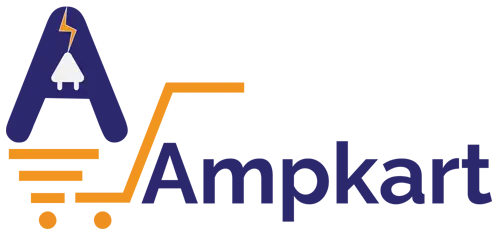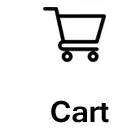Direct On-Line(DOL) Starter
The induction motor draws a high amount of startup voltage. In order to safeguard against any mishap following starting, methods are used to reduce the current flow.
• Star delta starter
• Soft Starter
• Direct On Line Starter
• Autotransformer Starter
• Variable frequency drive
Click here to buy Star Delta Starter.
Click here to buy Soft Starter.
A DOL Starter or Direct On Line Starter is one of the simplest methods to start a three-phase induction motor. As the name suggests, in this method the induction motor is directly connected to its 3 phase supply and the starter applies a full voltage of the main supply line directly to the terminals of the induction motor.
The DOL starter or across the line motor starter directly connects the induction motor to the supply line (through circuit breakers and relays) resulting in full supply line voltage being applied to the motor which is 5-8 times its rated current. The rated current of such induction motors is below 5HP.
The inrush of large current reduces to the rated current of the motor as it reaches its rated speed.
Normally this method is applied to small motors (eg. Water-pumps, conveyors, and compressors) with a low-rated current like the 3 phase squirrel cage motor. But if large-rated induction motors are used under this method it would lead to high inrush current, damaging the motor, simultaneously disrupting the power supply.
If the capacity of the power network permits, a high-rated induction motor can also be started using this method.
Features of DOL starting:
• For low and medium-power three-phase motors
• Three connection lines (circuit layout: star or delta)
• High starting torque
• Very high mechanical load
• High current peaks
• Voltage dips
• Simple switching devices
• Mechanical load
• Current peaks
• Easy switching devices
Components
• Contactors
• Coil
• Overload Relay
• Miniature Circuit Breaker
• Push Buttons
Click here to buy MCB.
Applications:
• DOL starter is often used to start small motors like water pumps, compressors, fans and conveyor belts where high inrush current isn’t harmful.
• Direct online starter can be used if the inrush current doesn’t cause any excessive drop.
• Very useful in low rating 3-phase induction motors along with having low input.
• They’re used where the maximum current doesn’t cause any damage such as to run small water pumps, fans, compressors, etc.
Working or Operation
1) To start the motor press the ON push button. Later the main power contactor coil is powered due to electromechanical effect latching on the contactor pole. The starter applies full line voltage on motor terminals and the motor starts running with the motor drawing high inrush voltage for short time.
2) As the motor accelerates heading towards full speed, the voltage starts to drop but not significantly until the motor achieves full speed which is approximately 85% of synchronous speed.
3) The time required for motor acceleration to reach full speed and the duration of high inrush voltage depends on its load but this won’t affect the magnitude of starting current.
4) If the starting torque developed exceeds the load torque of the motor at all speeds during the start cycle, the motor will attain full speed. If the torque developed is less than the torque of load at any given speed during the starting period, the motor stops accelerating.
5) If motor torque developed by the DOL Motor starter is less for load, then the motor must be replaced by the motor which can develop high starting torque.
Protection Provided by DOL Starter
• Under Voltage Protection
When the voltage falls below a certain value or when the supply fails or is disrupted during the operation of the motor, coil C is de-energized. Hence, the motor is disconnected from the supply.
In Direct online starting, the starting current may be as large as ten times the full load current, and the starting torque is equal to the full load torque. Such a large starting current produces an excessive voltage drop in the line which supplies power to the motor.
• Overload Protection
When the motor draws excess current due to increased load connected to the motor. During the situation of overload, the supply of current is beyond the safety limit that damages the motor windings and wires causing fire hazards.
Overload relays are employed to provide protection against overload hazards that trip in the face of excessive current, disrupting power supply, and protecting the system from overheating.
• Overcurrent Protection
Overcurrent is a situation where excess current or current beyond the specified limit flows through the conductor generating an excessive amount of heat. This can cause fire, damage to the motor, power lines, and operators.
In this method, MCB (main circuit breaker) is employed to break the circuit in case of an overcurrent or sudden high voltage supply. The fuse instantly trips if heated due to a power surge thereby breaking the circuit. The fuse is selected on the premises of rating.
Advantages
• Simplest and easiest starting method.
• 100% starting torque
• Single set of cable used from starter to motor.
• Compact size of starter takes less space.
• Overload protection
• Overcurrent protection
• Undercurrent protection
• Helpful for small motors.
• Simple control and operating circuitry.
Disadvantages:
• The starting current is very high which can be damaging.
• Voltage dip due to high startup current can be dangerous for other appliances connected in parallel.
• The 100% starting torque can be unnecessary in some cases.
• High starting torque causes mechanical stress.
• Starting current and torque cannot be controlled.
• Mechanically harsh which reduces the life of the motor.
Best Brands For DOL Starters
• Siemens
- Larsen & Tourbo
• C & S
 (+91) 7439 448 917
(+91) 7439 448 917 Cash on Delivery Available
Cash on Delivery Available



 Circuit Breakers
Circuit Breakers Power Distribution
Power Distribution Modular Switchboard
Modular Switchboard Wires & Cables
Wires & Cables




































